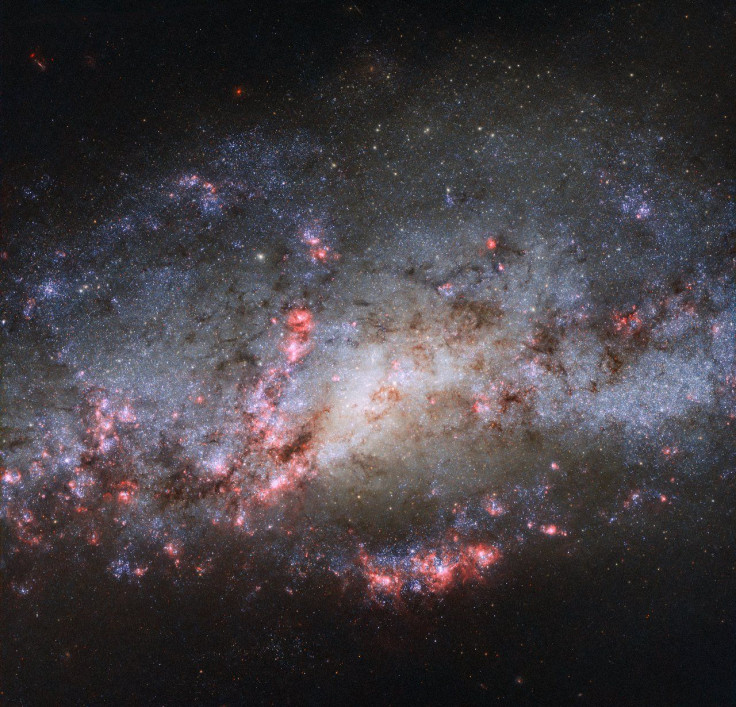NASA’s Hubble Spots Intense Star Formation In Colliding Galaxies

Starburst galaxies are often a result of collisions and/or mergers between two galaxies that were otherwise forming stars at a slow regular pace. And the Hubble Space Telescope captures, from time to time, such galactic encounters that make for spectacular images.
One such image made public on the Hubble website Thursday shows the galaxy NGC 4490, which has been classified as a starburst galaxy, given the spurt in its star-forming activity. This change in the galaxy’s behavior occurred after the forces of gravity — the weakest of the four fundamental forces of physics — brought it contact with a nearby smaller galaxy, NGC 4485.
In the photograph, all the pink regions are areas where intense star-forming activity is taking place in NGC 4490. This was triggered due to a collision with NGC 4485, which is not seen in the image. The collision led to “rippling patches of higher density gas and dust within both galaxies,” according to a statement accompanying the photograph, which adds: “The conditions there are ripe for star formation; the brilliant pink pockets of light seen here are dense clouds of ionized hydrogen, glowing as they are irradiated with ultraviolet light from nearby young, hot stars.”
Star formation is also seen in the thin bridge-like band that stretches between the two galaxies — another remnant from their collision. The 24,000 light-year distance that curtly separated NGC 4490 and NGC 4485 is bridged by this band of newly formed stars.
The image was captured after the most intense period of interaction between the two activities was already past, which is to say, the galaxies had already ripped through each other, disentangled from their mutual embrace and were already going on their separate paths. But the two galaxies, which together form a system called Arp 269, still feel the effects of each other.
The impact of the interaction caused NGC 4490 to lose its original shape — that of a barred spiral galaxy, like our own Milky Way — and its current shape has earned it the nickname “Cocoon Galaxy,” given how its outlying regions have stretched out. NGC 4485, however, which was also a spiral galaxy, still has its arms.
NGC 4490 and NGC 4485 are sure to cross paths again and repeat this cycle in a few billion years. And star formation is not all that is happening in NGC 4490. Death and destruction are as commonplace in the universe, if not more so, as life and creation. A number of supernovae have been spotted in the Cocoon Galaxy over the last few decades.
The Arp 269 system features in “Arp’s Catalog of Peculiar Galaxies” — a list of 338 galaxies and their images based on the “Atlas of Peculiar Galaxies,” which was compiled in 1966 by astronomer Halton C. Arp.
The Hubble Space Telescope is a collaboration between NASA and the European Space Agency and is currently the most powerful space observatory we have. Its successor, the James Webb Space Telescope — a joint effort of NASA, ESA and the Canadian Space Agency — was originally scheduled for an October 2018 launch. But NASA announced Thursday the JWST launch was postponed to spring of 2019.
© Copyright IBTimes 2024. All rights reserved.





















